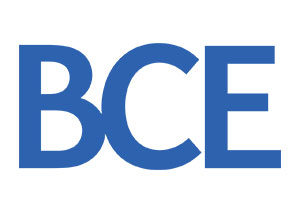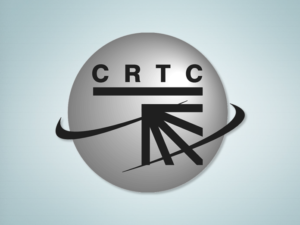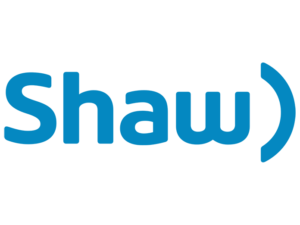 BCE Q2 2020 operating revenue was $5,354 million, down 9.1% compared to Q2 2019, due to reduced consumer and commercial activity as COVID-19 negatively impacted financial results across all Bell operating segments. Net earnings declined 64% to $294 million and net earnings attributable to common shareholders totalled $237 million, or $0.26 per share, down 68.9% and 69.4% respectively. The decreases were the result of $452 million in impairment charges related to certain Bell Media TV and radio properties, and lower adjusted EBITDA, partly offset by lower income taxes. Adjusted EBITDA decreased 9.4% to $2,331 million, driven by declines of 9.2% at Bell Wireless, 5.3% at Bell Wireline and 31.9% at Bell Media. Total media operating revenue decreased 31.2% to $579 million due to lower year-over-year advertising and subscriber revenues. Advertising revenue declined across all platforms – TV, radio, out of home and digital – due to the impact of COVID-19 on commercial activity, the suspension of major league sports schedules and the cancellation of other live events. Subscriber revenue was down due to declines across multiple channels reflecting continued cord shaving and over-the-top substitution. Total subscribers remained essentially stable, with subscribers for Crave growing to approximately 2.8 million from almost 2.7 million last year. BCE reported 34,702 net new wireless customers in Q2, surpassing 10 million total wireless subscribers; 19,023 net new retail Internet customers; a net loss of 3,604 IPTV customers; a net loss of 11,940 retail satellite TV customers; and a net loss of 48,405 retail residential NAS lines.
BCE Q2 2020 operating revenue was $5,354 million, down 9.1% compared to Q2 2019, due to reduced consumer and commercial activity as COVID-19 negatively impacted financial results across all Bell operating segments. Net earnings declined 64% to $294 million and net earnings attributable to common shareholders totalled $237 million, or $0.26 per share, down 68.9% and 69.4% respectively. The decreases were the result of $452 million in impairment charges related to certain Bell Media TV and radio properties, and lower adjusted EBITDA, partly offset by lower income taxes. Adjusted EBITDA decreased 9.4% to $2,331 million, driven by declines of 9.2% at Bell Wireless, 5.3% at Bell Wireline and 31.9% at Bell Media. Total media operating revenue decreased 31.2% to $579 million due to lower year-over-year advertising and subscriber revenues. Advertising revenue declined across all platforms – TV, radio, out of home and digital – due to the impact of COVID-19 on commercial activity, the suspension of major league sports schedules and the cancellation of other live events. Subscriber revenue was down due to declines across multiple channels reflecting continued cord shaving and over-the-top substitution. Total subscribers remained essentially stable, with subscribers for Crave growing to approximately 2.8 million from almost 2.7 million last year. BCE reported 34,702 net new wireless customers in Q2, surpassing 10 million total wireless subscribers; 19,023 net new retail Internet customers; a net loss of 3,604 IPTV customers; a net loss of 11,940 retail satellite TV customers; and a net loss of 48,405 retail residential NAS lines.
 Quebecor Q2 2020 highlights include revenue of $1 billion, down $53.1 million (‑5.0%) from the same period of 2019. Adjusted EBITDA was $475.7 million, up $20.7 million (4.5%). The Telecommunications segment grew its revenues by $14.7 million (1.7%) and its adjusted EBITDA by $13.6 million (3.0%) in the second quarter of 2020. Videotron significantly increased its revenues from customer equipment sales ($22.5 million or 43.8%) and mobile telephony ($13.3 million or 9.1%) in the second quarter of 2020. The company reported a net increase of 16,700 revenue‑generating units (0.3%) in the second quarter of 2020, including 35,100 connections (2.6%) to the mobile telephony service and 17,200 subscriptions (1.0%) to cable Internet access service. The Media and Sports and Entertainment segments posted revenue decreases of $57.4 million (‑30.2%) and $15.4 million (‑37.3%), respectively, and grew their adjusted EBITDA by $1.9 million (33.3%) and $4.3 million respectively in the second quarter.
Quebecor Q2 2020 highlights include revenue of $1 billion, down $53.1 million (‑5.0%) from the same period of 2019. Adjusted EBITDA was $475.7 million, up $20.7 million (4.5%). The Telecommunications segment grew its revenues by $14.7 million (1.7%) and its adjusted EBITDA by $13.6 million (3.0%) in the second quarter of 2020. Videotron significantly increased its revenues from customer equipment sales ($22.5 million or 43.8%) and mobile telephony ($13.3 million or 9.1%) in the second quarter of 2020. The company reported a net increase of 16,700 revenue‑generating units (0.3%) in the second quarter of 2020, including 35,100 connections (2.6%) to the mobile telephony service and 17,200 subscriptions (1.0%) to cable Internet access service. The Media and Sports and Entertainment segments posted revenue decreases of $57.4 million (‑30.2%) and $15.4 million (‑37.3%), respectively, and grew their adjusted EBITDA by $1.9 million (33.3%) and $4.3 million respectively in the second quarter.
 The CRTC says Bell is giving undue preference to its RDS channel at the expense of TVA Sports, according to a letter Quebecor says it received from the commission earlier this week. In the letter, Quebecor says the CRTC states that Bell’s proposed new packaging structure still fails to comply with its Dec. 2019 decision. TVA Group had filed a complaint with the CRTC on Feb. 27, 2019 alleging that Bell was subjecting TVA Sports to an undue disadvantage and conferring an undue preference on RDS, in violation of section 9 of the Broadcasting Distribution Regulations. TVA Group has instituted proceedings in Québec Superior Court seeking compensation for what it says is tens of millions in damages that Bell has caused it through the stratagem.
The CRTC says Bell is giving undue preference to its RDS channel at the expense of TVA Sports, according to a letter Quebecor says it received from the commission earlier this week. In the letter, Quebecor says the CRTC states that Bell’s proposed new packaging structure still fails to comply with its Dec. 2019 decision. TVA Group had filed a complaint with the CRTC on Feb. 27, 2019 alleging that Bell was subjecting TVA Sports to an undue disadvantage and conferring an undue preference on RDS, in violation of section 9 of the Broadcasting Distribution Regulations. TVA Group has instituted proceedings in Québec Superior Court seeking compensation for what it says is tens of millions in damages that Bell has caused it through the stratagem.
The CRTC has selected five projects from its first call for applications to the Broadband Fund. The five projects, throughout Manitoba, Yukon, and the Northwest Territories, will be allocated up to $72.1 million in funding to bring high-quality broadband internet access to underserved areas. As a result, the commission says over 316 km of new fibre will be installed and over 10,100 households in northern communities will have access to improved broadband internet services.
 The Canadian Internet Registration Authority (CIRA) says data from its Internet Performance Test shows that Canada’s urban-rural digital divide persisted during the first five months of the COVID-19 pandemic. In July, the median download speeds received by rural Canadians (5.62 Mbps) was roughly 10 times slower than those experienced by their urban counterparts (51.54 Mbps), with urban internet performance steadily improving and outpacing rural improvements since the pandemic began. CIRA says between March and July, urban internet users saw an average download speed increase of about 25 Mbps, while rural speeds have not notably improved, plateauing around 5.5 Mbps. The data is based on test results generated between May 2019 and July 2020 from a total of 130,794 urban tests and 56,982 rural tests.
The Canadian Internet Registration Authority (CIRA) says data from its Internet Performance Test shows that Canada’s urban-rural digital divide persisted during the first five months of the COVID-19 pandemic. In July, the median download speeds received by rural Canadians (5.62 Mbps) was roughly 10 times slower than those experienced by their urban counterparts (51.54 Mbps), with urban internet performance steadily improving and outpacing rural improvements since the pandemic began. CIRA says between March and July, urban internet users saw an average download speed increase of about 25 Mbps, while rural speeds have not notably improved, plateauing around 5.5 Mbps. The data is based on test results generated between May 2019 and July 2020 from a total of 130,794 urban tests and 56,982 rural tests.
 Shaw Communications has launched Smart Remote Office, a teleworking gateway aimed at ensuring businesses can keep control over network security while giving employees a digital experience similar to what that they would get in the office. Smart Remote Office allows businesses to offer their employees a secure, reliable connection directly to the company’s internal network. It’s now available from Shaw Business throughout Western Canada featuring a built-in firewall, VPN functionality using end-to-end encryption, self-install, and portability that allows employees to work securely from anywhere they have access to a modem.
Shaw Communications has launched Smart Remote Office, a teleworking gateway aimed at ensuring businesses can keep control over network security while giving employees a digital experience similar to what that they would get in the office. Smart Remote Office allows businesses to offer their employees a secure, reliable connection directly to the company’s internal network. It’s now available from Shaw Business throughout Western Canada featuring a built-in firewall, VPN functionality using end-to-end encryption, self-install, and portability that allows employees to work securely from anywhere they have access to a modem.



